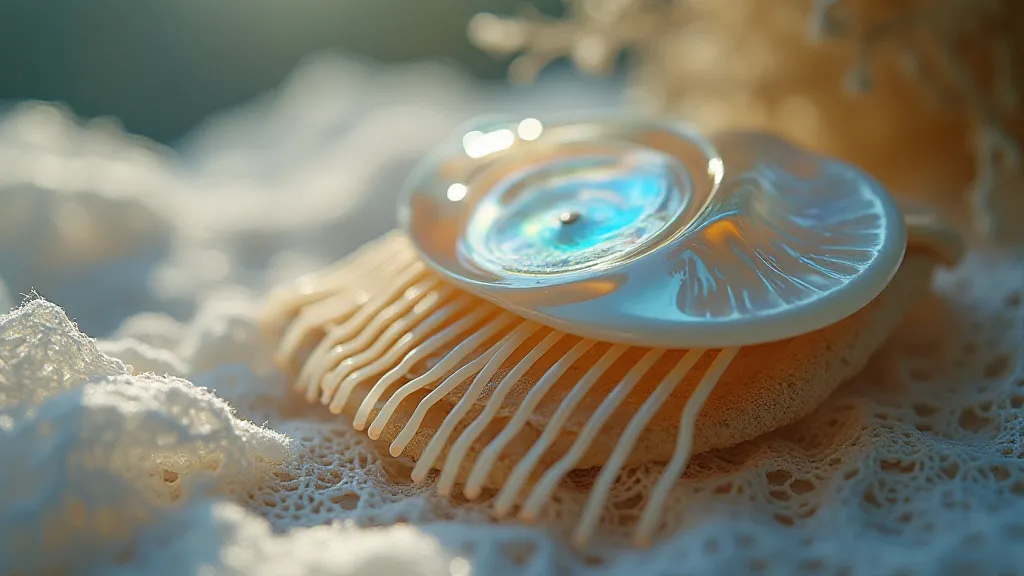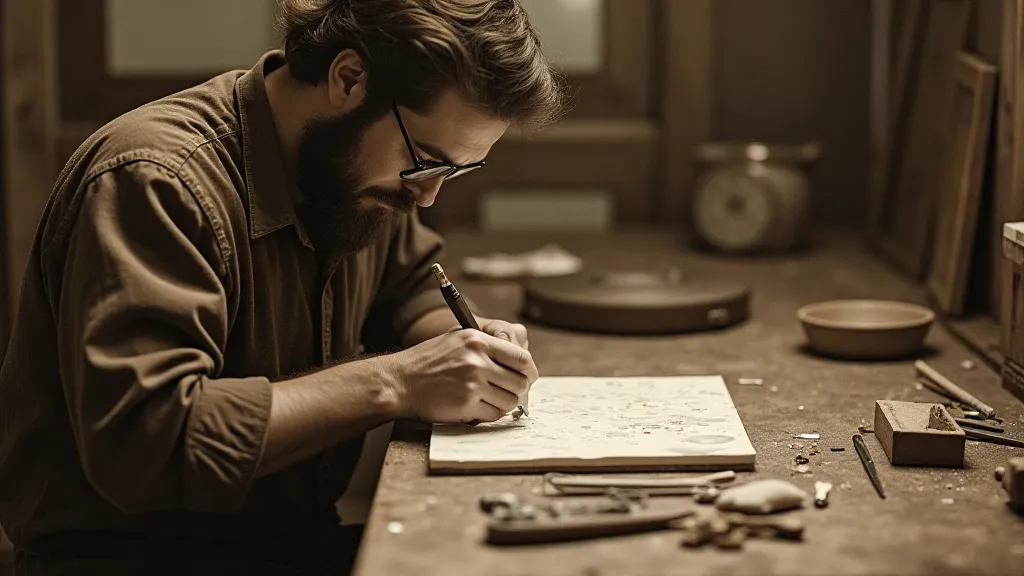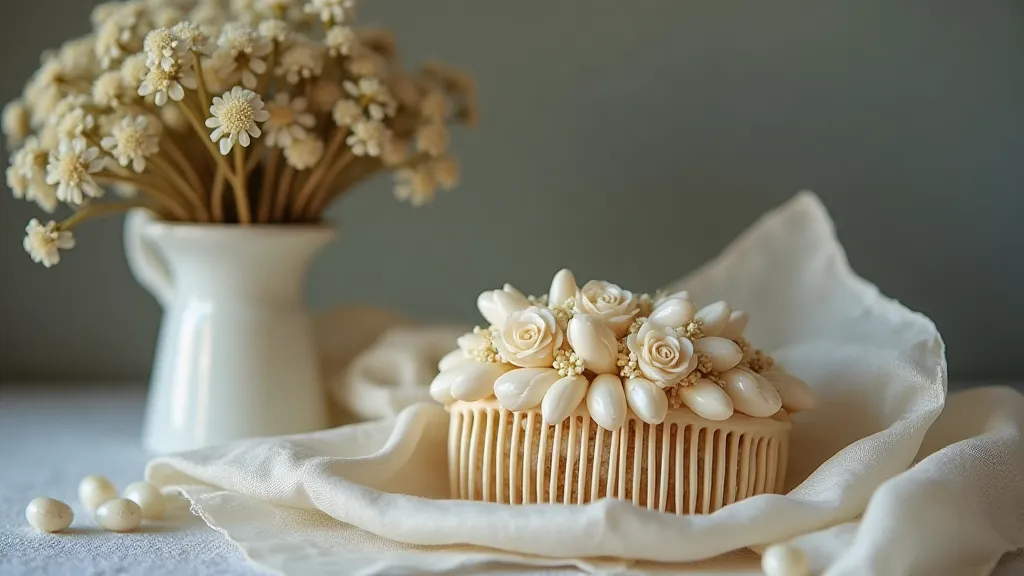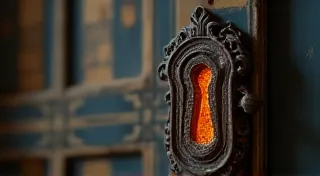The Alchemist's Touch: Unveiling the Secrets of Mother-of-Pearl Hair Combs
There's a quiet elegance, a subtle shimmer, that emanates from a vintage mother-of-pearl hair comb. It’s more than just an accessory; it’s a whisper from a bygone era, a tangible connection to the women who graced salons and grand ballrooms a century ago. Holding one in your hand, you can almost feel the echoes of their laughter, the rustle of silk gowns, and the weight of unspoken stories. My own fascination began with a dusty box unearthed at a local antique shop – a small trove of forgotten treasures, amongst which lay a single, iridescent comb. It wasn't particularly ornate, but the way the light danced across its surface… it captivated me instantly.
Mother-of-pearl, or nacre, isn't a single substance, but a composite material secreted by mollusks – oysters, mussels, and abalone. It’s created layer upon layer, each a microscopic tile of calcium carbonate bound by an organic protein called conchiolin. This intricate structure is what gives mother-of-pearl its extraordinary luster, a play of colors that shifts and changes depending on the angle of the light. It's an alchemist’s dream, a natural wonder transformed into an object of beauty.

A History Etched in Time
The use of mother-of-pearl in ornamentation dates back millennia. Ancient civilizations – Romans, Greeks, Egyptians – prized it for its beauty and durability. However, its prominence as a material for hair accessories truly blossomed during the late 19th and early 20th centuries, particularly during the Art Nouveau and Edwardian periods. The rise of the middle class, increasing leisure time, and a renewed interest in elaborate hairstyles all contributed to its popularity.
During the Victorian era, hair was a canvas for intricate designs. Combs weren’t merely functional; they were integral components of elaborate updo’s, often adorned with ribbons, flowers, and jeweled accents. The Edwardian period, a time of optimism and elegance, saw a further refinement of these styles. Mother-of-pearl combs, often combined with silver, gold, or tortoise shell, became symbols of refined taste and social standing. Imagine a young woman, meticulously styled by a skilled hair dresser, her mother-of-pearl comb catching the light as she prepares for a grand soirée. It wasn’t just about the hair; it was about the presentation, the feeling of being utterly, effortlessly elegant.
The availability of mother-of-pearl also fluctuated, impacting its value. Initially, combs were often made from freshwater pearl, more readily accessible. As demand grew, artisans turned to more exotic varieties, such as abalone from the Pacific coast. This scarcity, coupled with the intricate craftsmanship required to shape and polish the material, contributes to the rarity and value of many vintage mother-of-pearl combs today.
The Art of Creation: More Than Just Shaping Nacre
Creating a mother-of-pearl comb wasn’t a simple process. It required a skilled artisan, a keen eye, and an understanding of the material’s unique properties. The raw nacre sheets, thin and fragile, had to be carefully selected, cleaned, and then painstakingly shaped. Often, this involved a combination of hand-sawing, filing, and polishing – a process that could take days, even weeks, for a single comb.
Many combs were constructed using a base of other materials, such as silver, brass, or even tortoiseshell. The nacre was then meticulously inlaid, creating intricate patterns and designs. These patterns ranged from simple geometric shapes to elaborate floral motifs, often reflecting the artistic trends of the time. The quality of the metalwork, the precision of the inlay, and the overall craftsmanship are all factors that contribute to the value and desirability of a vintage mother-of-pearl comb.

Collecting & Caring for Your Treasures
For the collector, vintage mother-of-pearl combs represent a tangible link to the past, a chance to own a piece of artistry and history. However, collecting these delicate treasures requires a bit of knowledge and care. Condition is paramount. Look for combs that are free from cracks, chips, or significant discoloration. While some patina is natural and even desirable, excessive fading or damage significantly detracts from the value.
Restoration is a delicate matter. Avoid harsh chemicals and abrasive cleaners. Gentle cleaning with a soft cloth and mild soap is often sufficient. Missing pieces are notoriously difficult to replace convincingly, and often detract from the comb's value. More often than not, a comb's true beauty lies in its original, unaltered state. The slight imperfections and signs of age are part of its story, adding to its character and charm.
Rarity plays a significant role in value. Combs with unique designs, unusual materials, or those bearing the mark of a renowned artisan are highly sought after. Research is key. Familiarize yourself with different manufacturers, design styles, and hallmarks to better assess the value of your finds.
A Legacy of Shimmer and Grace
Holding a vintage mother-of-pearl hair comb is more than just possessing a beautiful object. It’s an experience. It’s a connection to a time of elegance and refinement, a testament to the skill and artistry of the craftspeople who created them. The soft shimmer of the nacre, the delicate intricacies of the design… it’s a reminder that beauty can be found in the simplest of things, and that even the most fragile objects can endure through the passage of time.
Each comb tells a story, whispered across generations. A young woman preparing for her first ball, a bride on her wedding day, a debutante making her entrance into society… these are the echoes that linger within the iridescent surface. And as we continue to discover and appreciate these forgotten treasures, we ensure that their legacy of shimmer and grace endures for generations to come.






